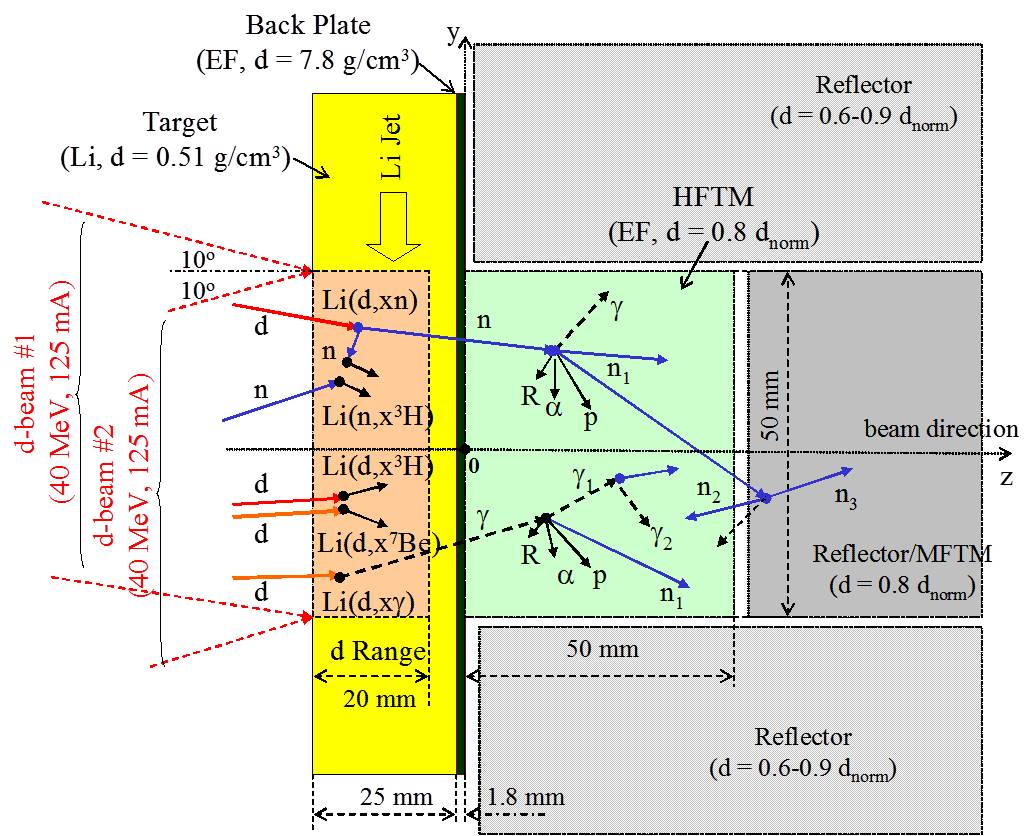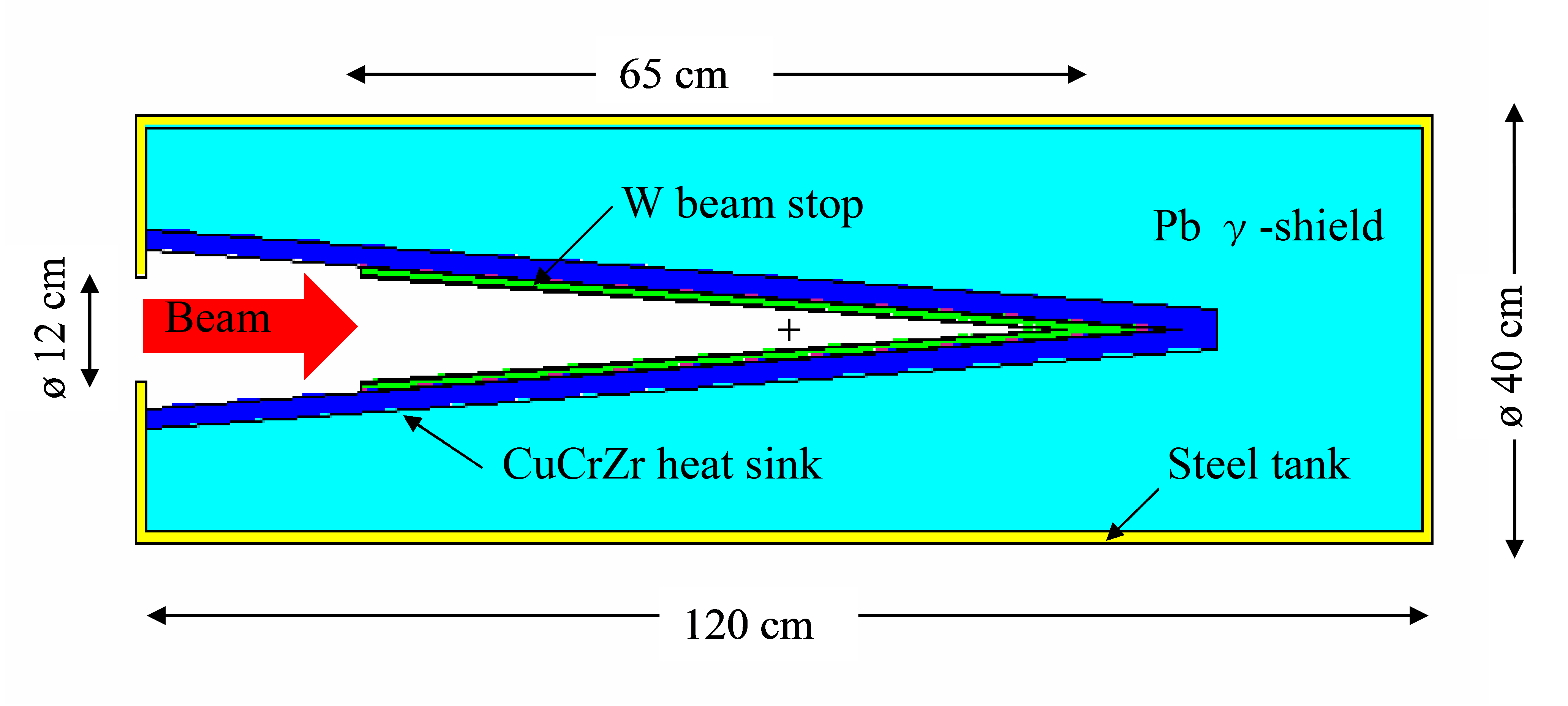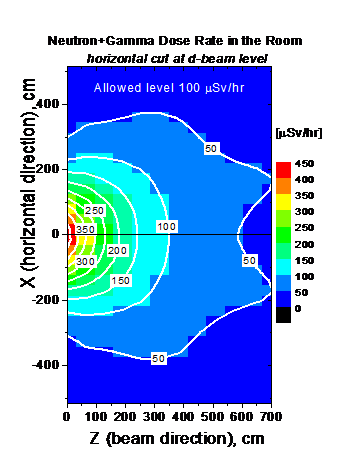Neutronics for IFMIF
Overview
The International Fusion Materials Irradiation Facility (IFMIF) is an accelerator-based d-Li neutron source with the capability to produce neutrons at sufficient energy, intensity and irradiation volume to test samples of candidate materials up to a full lifetime of anticipated use in fusion energy reactors. The accuracy of the assessed induced radiation effects will be affected to a large extent by the quality of the predictions of spectral and angular neutron yield.
D-Li-Neutron Source Term

To enable a proper representation of the d-Li neutron source term in Monte Carlo transport calculations for IFMIF the dedicated McDeLicious code was developed. It is enhancement (set of subroutines) to MCNP with ability to sample/model:
- deuteron beam configuration, orientation and profile;
- deuteron slowing down in the Lithium;
- generation of d-Li source neutrons on the basis of tabulated (ACE formatted) evaluated d + 6,7Li cross-sections NIM B266(2008)3501.
McDeLicous-05 (version of 2010):
- reference NSE 307(2012)1710;
- practical details in this short Manual;
- source subrotines, d-Li data, compilationm scripts, test input/output (on request) .
Nuclear Design Calculations
Activation and Transmutation

- Assessment of the 3H and 7Be generation in the IFMIF lithium loop: J. of Nucl.Mat 329.333(2004)213
- Activation of the IFMIF prototype accelerator and beam dump by deuterons and protons: Fus.Eng.Des 83(2008)1543
- Assessment of the Tritium Production in the HFTM Specimen Cells of IFMIF: IEEE Transactions on Plasma Science, 38(2010)259
Shielding Analyses

To complete the full shielding analysis the coupling of the Monte Carlo and Discrete Ordinate transport methods was used. The developed MCDO interface program couples the MCNP-5 family (McDeLicious for IFMIF) and TORT codes.
In such way the prompt dose rate in the access room behind 3m front wall was found exceeds the allowed level of 100 μSv/hr. To permit an access to the room during accelerator operation, the shielding wall has to be made 30 cm thicker, see Fus. Eng.Des. 85(2010)1924.
